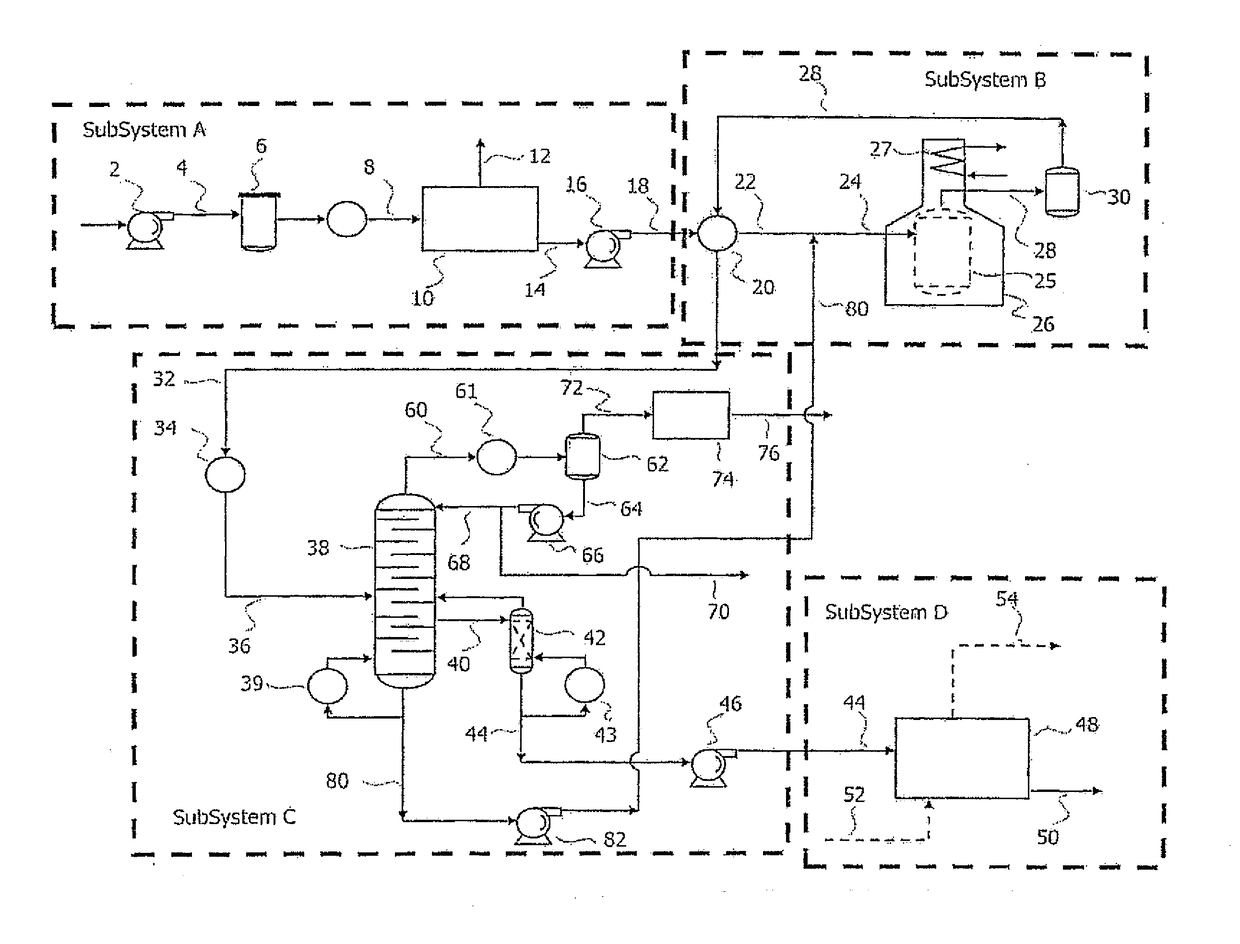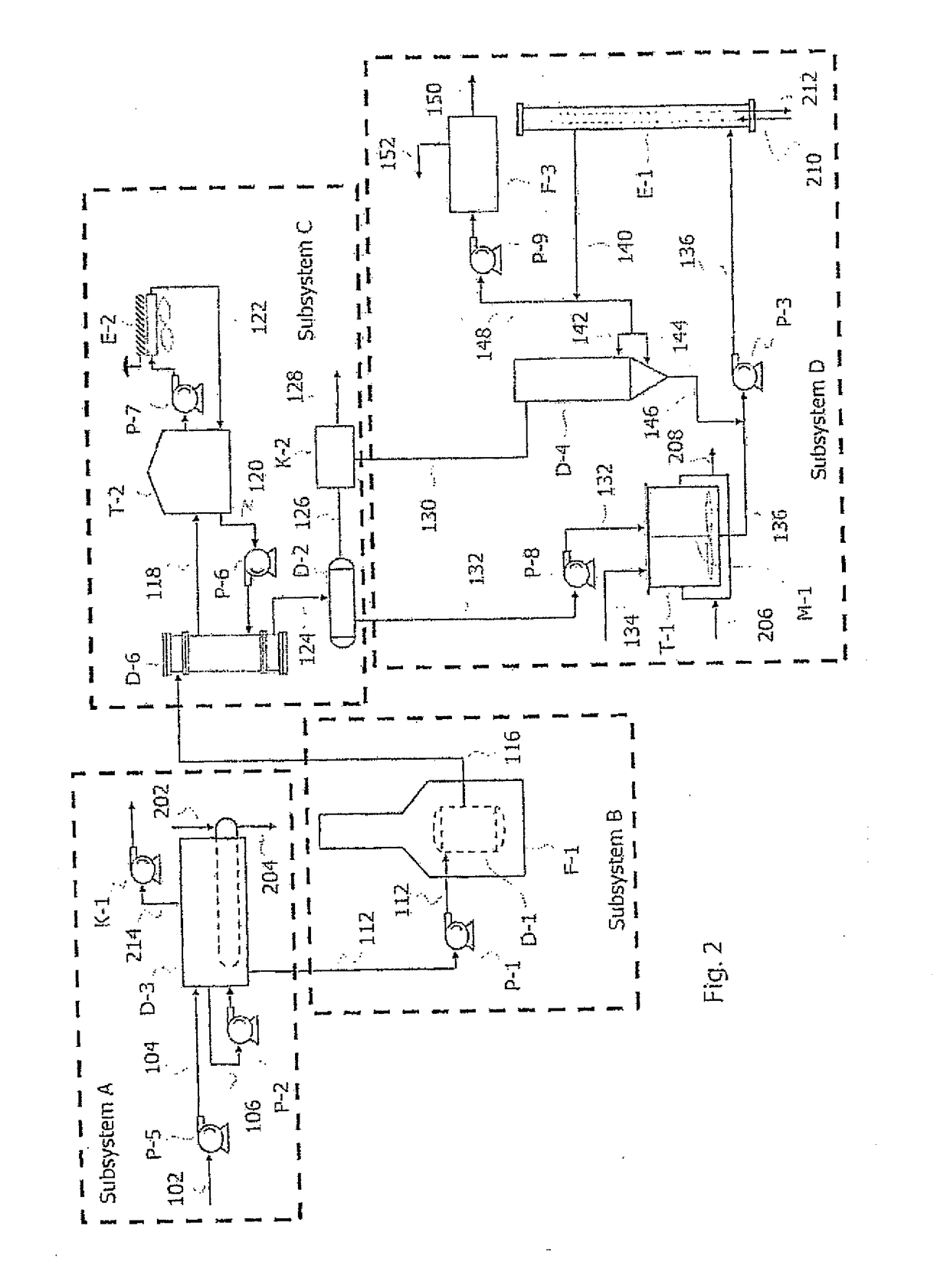Processing Diesel Fuel From Waste Oil
a technology of waste oil and diesel fuel, which is applied in the direction of hydrocarbon distillation, liquid carbonaceous fuels, pyrolysis reactions, etc., can solve the problems of large-scale capital-intensive process facilities, inability to economically re-refine waste oil with known technology, and difficult economics of re-refining waste oil. , to achieve the effect of reducing the cost of waste oil re-refining, low cost, and low cos
- Summary
- Abstract
- Description
- Claims
- Application Information
AI Technical Summary
Benefits of technology
Problems solved by technology
Method used
Image
Examples
implementation example
[0096]FIG. 2 and FIG. 3 show a schematic block diagram of an illustrative implementation of the disclosed invention by way of example. This example is an implementation that lends itself best to a prototype or research and development application. This embodiment can be operated in a continuous, semi-batch or batch mode depending on the needs of the user. In a manner analogous to the preferred embodiment previously described, this embodiment also generally comprises four subsystems, including: (i) a dehydration subsystem (Subsystem A); (ii) a thermal reactor subsystem (Subsystem B); (iii) a condensation subsystem (Subsystem C); and (iv) a filtration subsystem (Subsystem D).
[0097]As shown in FIG. 2, Subsystem A is an illustrative dehydration subsystem in which waste oil feed transfer pump (P-5) first continuously brings waste oil from storage (stream 102) that generally contains 5-10% free water and / or emulsified water and transfers it via waste oil dehydrator feed stream 104 to dehy...
PUM
| Property | Measurement | Unit |
|---|---|---|
| pressure | aaaaa | aaaaa |
| pressure | aaaaa | aaaaa |
| pressure | aaaaa | aaaaa |
Abstract
Description
Claims
Application Information
 Login to View More
Login to View More - R&D
- Intellectual Property
- Life Sciences
- Materials
- Tech Scout
- Unparalleled Data Quality
- Higher Quality Content
- 60% Fewer Hallucinations
Browse by: Latest US Patents, China's latest patents, Technical Efficacy Thesaurus, Application Domain, Technology Topic, Popular Technical Reports.
© 2025 PatSnap. All rights reserved.Legal|Privacy policy|Modern Slavery Act Transparency Statement|Sitemap|About US| Contact US: help@patsnap.com



